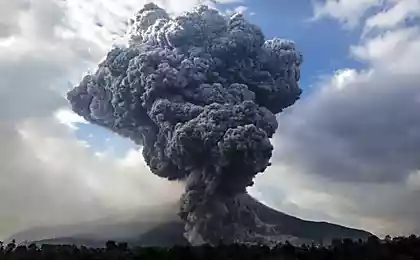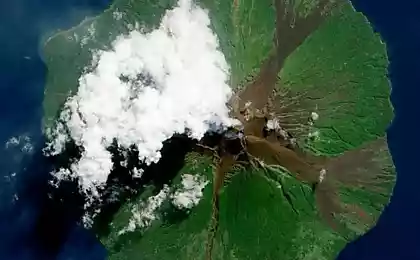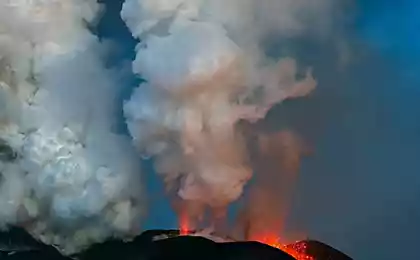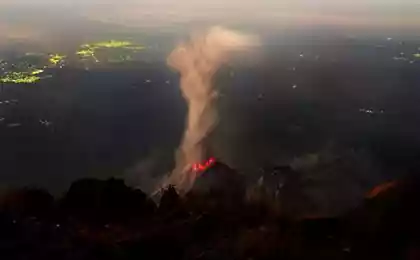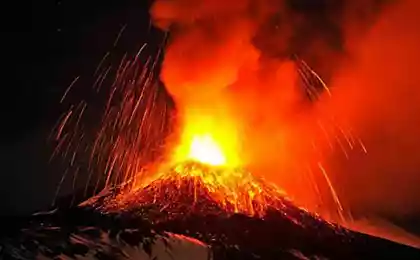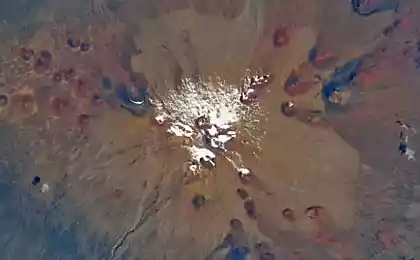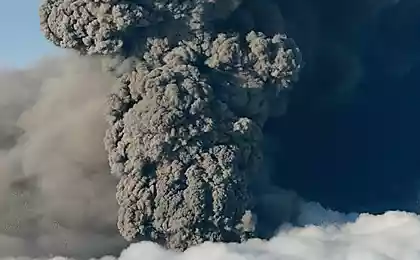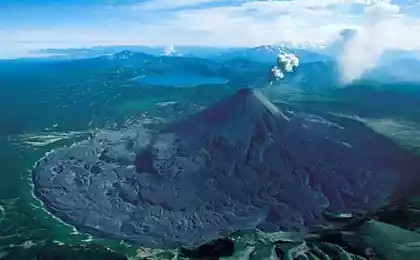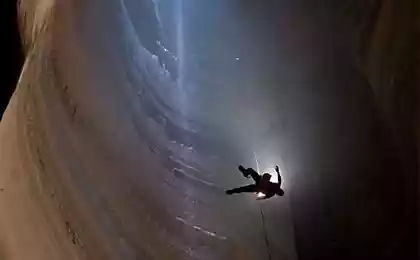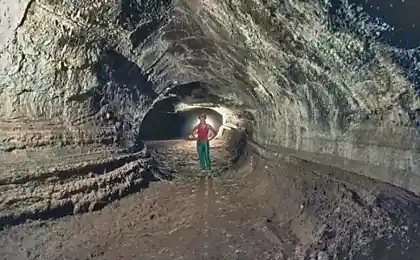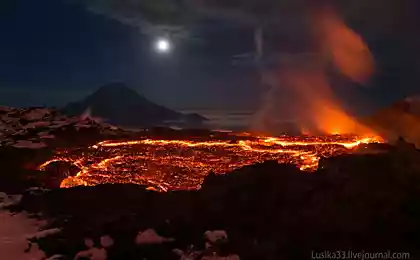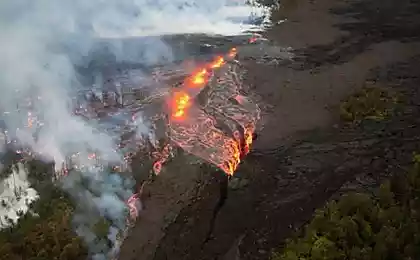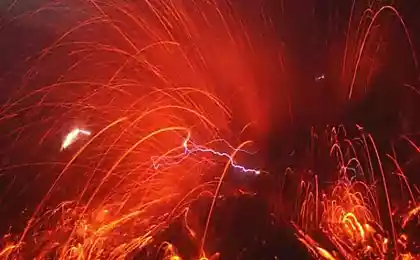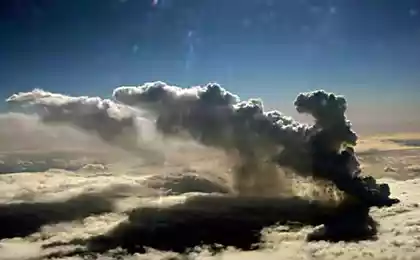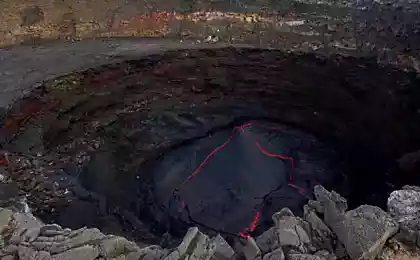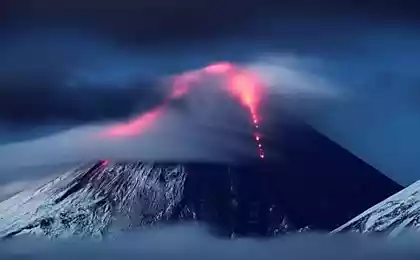626
Lava tunnels
Lava tube — channels, which are obtained by the uneven cooling of the current from the slopes of the volcano lava. The surface layers of lava due to contact with air, which is much colder than the lava cools faster and become solid, forming a hard crust. It creates a thermal insulation for the inner layers remain hot and fluid. The result is closer to the center of the lava tube the lava flow is still going, even when the upper layers have cooled. As further cooling of lava, the thickness of this crust increases, slowing down the rate of cooling of lava inside a lava tube. And even when the source of lava is exhausted, the contents of the tube continues to slide down the slope, leaving a void, which is called lava tubes. Leaving the tube, lava reserves open passage at one end.

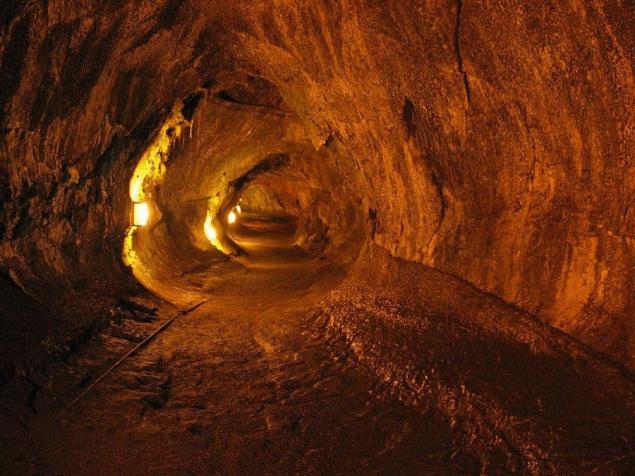
Valentine cave in Lava Beds National Monument, California. Lava tube classic shape. After all the lava left the tube, the walls formed of the tunnel remain the marks showing the level at which lava flowed during the eruption, known as the threading protrusions or stream lines, depending on how deep they protrude from the walls of the tunnel.
Lava tube in Nationala Park Hawaii volcanoes, Hawaii. On the right wall at the bottom you can see the level at which lava flowed during the last eruption.
Lava cave Manjanggul, Jeju, South Korea. Lava tubes can reach 14 to 15 meters in width, although usually they are much thinner and located at a depth of 1 to 15 meters below the surface. The length of lava tubes can be very large and can reach several kilometers.

Basalt formations on the ceilings of lava tubes. Lava tubes generally have a flat bottom and sometimes top. Quite rare, but in lava tubes can meet various "caving" formations, like stalactites and stalagmites, including various forms of stalactites.
Quite rare for lava tubes structure of the lava column. This pillar of lava is in a lava tube system, Manjanggul on Jeju island, Korea.

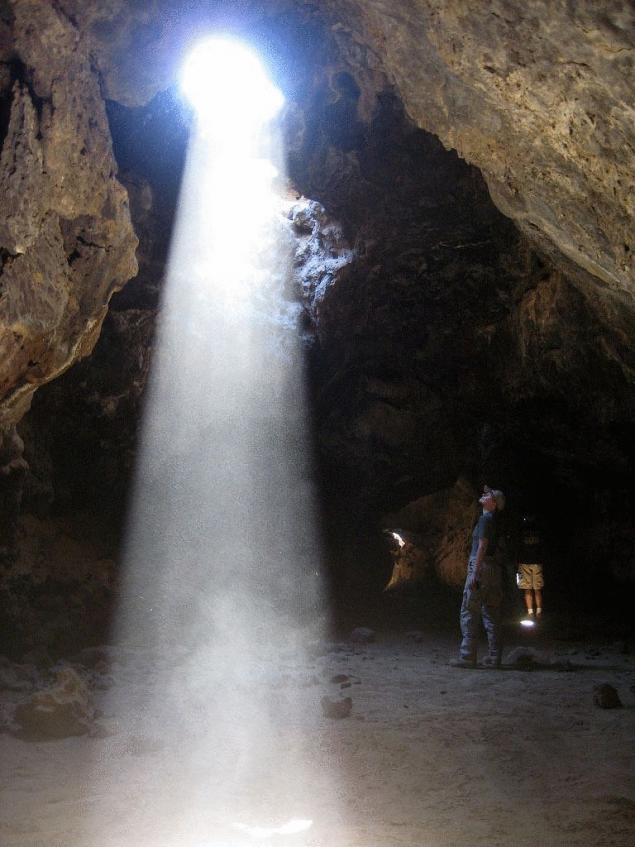
Source: /users/104


Valentine cave in Lava Beds National Monument, California. Lava tube classic shape. After all the lava left the tube, the walls formed of the tunnel remain the marks showing the level at which lava flowed during the eruption, known as the threading protrusions or stream lines, depending on how deep they protrude from the walls of the tunnel.
Lava tube in Nationala Park Hawaii volcanoes, Hawaii. On the right wall at the bottom you can see the level at which lava flowed during the last eruption.
Lava cave Manjanggul, Jeju, South Korea. Lava tubes can reach 14 to 15 meters in width, although usually they are much thinner and located at a depth of 1 to 15 meters below the surface. The length of lava tubes can be very large and can reach several kilometers.

Basalt formations on the ceilings of lava tubes. Lava tubes generally have a flat bottom and sometimes top. Quite rare, but in lava tubes can meet various "caving" formations, like stalactites and stalagmites, including various forms of stalactites.
Quite rare for lava tubes structure of the lava column. This pillar of lava is in a lava tube system, Manjanggul on Jeju island, Korea.


Source: /users/104
International center for the arts in Guimarães
Reproduction of jellyfish threatens ecological troubles
